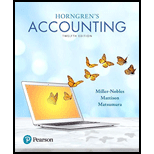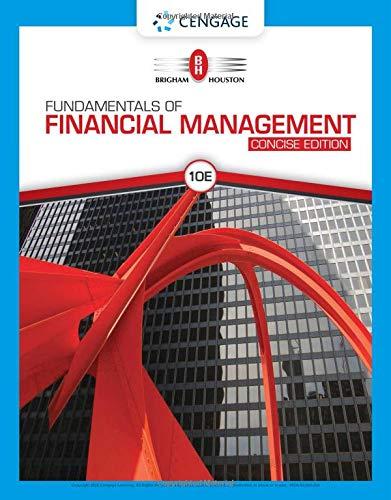
Concept explainers
Completing a comprehensive budgeting problem—manufacturing company
Learning Objectives 3, 4
1. 3rd Qtr. DM purchases $34,680
4th Qtr. total cash pmts. (before interest) $87,159
The Gerard Tire Company manufactures racing tires for bicycles. Gerard sells tires for $90 each. Gerard is planning for the next year by developing a
| GERARD TIRE COMPANYBalance SheetDecember 31, 2018 | ||
| Assets | ||
| Current Assets: | ||
| Cash | $56,000 | |
| 20,000 | ||
| Raw Materials Inventory | 5,100 | |
| Finished Goods Inventory | 9,900 | |
| Total Current Assets | $91,000 | |
| Property, Plant, and Equipment: | ||
| Equipment | 194,000 | |
| Less: |
(42,000) | 152,000 |
| Total Assets | $243,000 | |
| Liabilities | ||
| Current Liabilities: | ||
| Accounts Payable | $8,000 | |
| Common Stock, no par | $120,000 | |
| 115,000 | ||
| Total Stockholders’ Equity | 235,000 | |
| Total Liabilities and Stockholders’ Equity | $243,000 | |
Other data for Gerard Tire Company:
a. Budgeted sales are 1,500 tires for e first quarter and expected to increase by 200 tires per quarter. Cash sales are expected to be 10% of total sales, with the remaining 90% of sales on account.
b. Finished Goods inventory on December 31, 2018, consists of 300 tires at $33 each.
c. Desired ending Finished Goods Inventory 30% of the next quarter’s sales; first quarter sales for 2020 are expected to be 2,300 tires. FIFO inventory costing method is used.
d. Raw Materials Inventory on Decenter 31, 2018, consists of 600 pounds of rubber compound used to manufacture the tires.
e. Direct materials requirements are 2 pounds of a rubber compound per tire. The cost of the compound is $8.50 per pound.
f. Desired ending Raw Material Inventory 40% of the next quarter’s direct materials needed for production; desired ending inventory for December 31, 2019 is 600 pounds; indirect materials are insignificant and not considered for budgeting purposes.
g. Each tire requires 0.4 hours of directed labor; direct labor costs average $12 per hour.
h. Variable manufacturing overhead $4 per tire.
i. Fixed manufacturing overhead includes $6,000 per quarter in depreciation and $16,770 per quarter for other costs, such as utilities, insurance, and property taxes.
j. Fixed selling and administrative expenses include $12,500 per quarter for salaries; $3,000 per quarter for rent; $450 per quarter for insurance; and $2,000 per quarter for depreciation.
k. Variable selling and administrative expenses include supplies at 2% of sales.
l. Capital expenditure include $15,000 for new manufacturing equipment, to be purchased and paid in the first quarter.
m. Cash receipts for sales on account are 70% in the quarter of the sale and 30% in the quarter following the sale; December 31, 2018, Accounts Receivable is received in the first quarter of 2019; uncollectible accounts are considered insignificant and not considered for budgeting purposes.
n. Diret materials purchases are paid 60% in the quarter purchased and 40% in the following quarter, December 31, 2018, Accounts Payable is paid in the first quarter of 2019.
o. Direct labor, manufacturing overhead, and selling and administrative costs are paid in the quarter incurred.
p. Income tax expense is projected at $1,500 per quarter and is paid in the quarter incurred..
q. Gerard desires to maintain a minimum cash balance of $55,000 and borrows from the local bank as needed in increments of $1,000 at the beginning of the quarter; principal repayments are made at the beginning of the quarter when excess funds are available and in increments of $1,000; interest is 6% per year and paid at the beginning of the quarter based on the amount outstanding from the previous quarter.
Requirements
1. Prepare Gerard’s operating budget and
2. Prepare Gerard’s annual financial budget for 2019, including budgeted come statement and budgeted balance sheet.
Want to see the full answer?
Check out a sample textbook solution
Chapter 22 Solutions
Horngren's Accounting Plus Mylab Accounting With Pearson Etext -- Access Card Package (12th Edition)
- A company purchases inventory on account. What happens?A. Assets and liabilities increaseB. Assets increase, equity decreasesC. Only assets increaseD. Only liabilities increase need aarrow_forwardA company purchases inventory on account. What happens?A. Assets and liabilities increaseB. Assets increase, equity decreasesC. Only assets increaseD. Only liabilities increasearrow_forwardCan you show me the correct approach to solve this financial accounting problem using suitable standards?arrow_forward
- Can you provide the valid approach to solving this financial accounting question with suitable standards?arrow_forwardRevenue accounts have which type of balance?A. DebitB. CreditC. ZeroD. Variesarrow_forwardI am looking for help with this financial accounting question using proper accounting standards.arrow_forward
- Can you explain the process for solving this financial accounting problem using valid standards?arrow_forwardWhich of the following is not a financial statement?A. Trial BalanceB. Balance SheetC. Income StatementD. Statement of Cash Flowsarrow_forwardI need correct answer A company’s chart of accounts is:A. A list of balancesB. A general ledgerC. A list of all account names and numbersD. A type of journalarrow_forward
- Can you explain this financial accounting question using accurate calculation methods?arrow_forwardI am looking for help with this general accounting question using proper accounting standards.arrow_forwardCan you explain this general accounting question using accurate calculation methods?arrow_forward
 Cornerstones of Cost Management (Cornerstones Ser...AccountingISBN:9781305970663Author:Don R. Hansen, Maryanne M. MowenPublisher:Cengage Learning
Cornerstones of Cost Management (Cornerstones Ser...AccountingISBN:9781305970663Author:Don R. Hansen, Maryanne M. MowenPublisher:Cengage Learning Managerial AccountingAccountingISBN:9781337912020Author:Carl Warren, Ph.d. Cma William B. TaylerPublisher:South-Western College PubPrinciples of Accounting Volume 2AccountingISBN:9781947172609Author:OpenStaxPublisher:OpenStax College
Managerial AccountingAccountingISBN:9781337912020Author:Carl Warren, Ph.d. Cma William B. TaylerPublisher:South-Western College PubPrinciples of Accounting Volume 2AccountingISBN:9781947172609Author:OpenStaxPublisher:OpenStax College Fundamentals Of Financial Management, Concise Edi...FinanceISBN:9781337902571Author:Eugene F. Brigham, Joel F. HoustonPublisher:Cengage Learning
Fundamentals Of Financial Management, Concise Edi...FinanceISBN:9781337902571Author:Eugene F. Brigham, Joel F. HoustonPublisher:Cengage Learning



